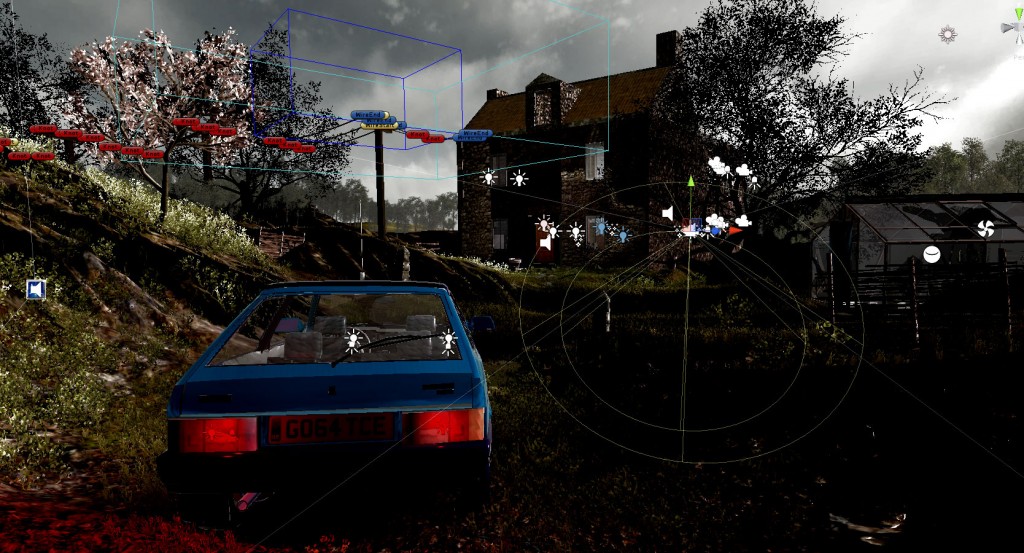The Reverse Script
WALLPAPER has been created, for the most part, without a script. We’ve used a shared Dropbox folder to build up snippets of text and resources (fiction, notes, ideas, letters, scans, photographs, video, audio, 3D objects, etc), but the final text being used in the work exists at the moment only inside the work itself. Which means at the end of the day when the project is complete, if we want to produce any kind of “text only” script, we’ll have to reverse-engineer the writing out of the project and paste it into a document.
Like many other works of digital fiction, WALLPAPER doesn’t always show exactly the same text on screen per reading/game play session. How this manifests in terms of text depends on various factors: how far into the story are we? Is the reader/player very active or being purposely annoying or lazy? What elements of the narrative have been uncovered so far?
Because a large proportion of the work is free to “roam around” computer game-style through PJ’s first person perspective, the narrative is as sprawling and fragmented as the graphics and sound effects, and subject to occasional hints of randomisation. An extracted, “text only” script might be very difficult to follow.
Due to working within the philosophy of experimenting with narrative as something that is created ‘live’ within a project – responding to and influencing the media that works alongside it – the textual element of WALLPAPER will not be properly finalised until the project is published as a whole. Although we’ve explored this methodology before in previous Dreaming Methods works, particularly Joyride (2004), The Flat (2006), Dim O’Gauble (2007) and Clearance (2007), we’ve never quite pushed it to this degree.

